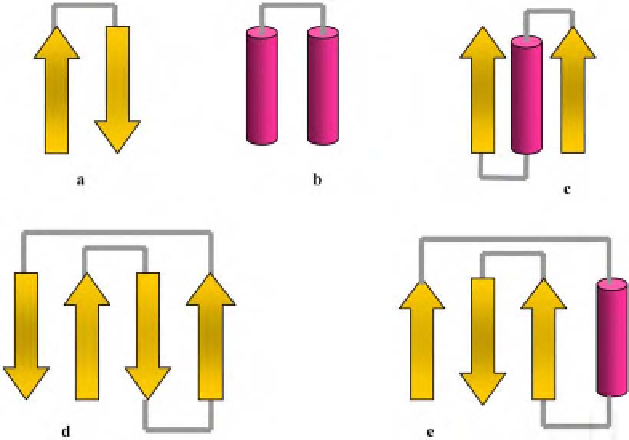Information Technology Reference
In-Depth Information
Figure 12. Topology diagrams of common supersecondary structures described in
the text. a) β -hairpin. b) α-hairpin. c) βαβ-unit d) Greek-key e) αβ-Greek-Key
3.3 Greek Key
Two common extended supersecondary structures have been classified: the
β
4
Greek key
[37] and the
αβ
Greek key [38]. The classic
β
4
Greek key motif illustrated in figure 12d
consists of four adjacent anti-parallel
-hairpins that need not
belong to the same sheet. There are 24 ways in which to arrange a four stranded
β
-sheet
however only eight of these were found in a survey of known structures in 1991 [39], five
of which were arranged with all the strands anti-parallel. The Greek key motif is the
topological signature of
β
-strands comprising two
β
β
-barrels and
β
sandwiches, which are the two most prevalent
β
-
folds (section 6). A variation is the
-Greek Key (Figure 12e) in which strand 2 is
replaced by a
α
-helix and the three
β
-strands are part of the same
β
-sheet.
αβ
3.4 Larger Loops
Many supersecondary structures have specific functions for example a helix-loop-helix
motif specific for DNA binding is found in many prokaryotic and eukaryotic transcription
factors. A similar motif, the EF hand, is found in calcium-binding proteins such as
calmodulin, troponin C and parvalbumin (figure 13 b), [40]. The two
-helices of the EF
hand are approximately perpendicular with a connecting loop containing 12 residues. Four
or five loop residues have oxygen containing side chains, preferably aspartate or glutamate
that coordinate with a calcium ion.
α

